Kenya 3 Day Safari: Top Destinations, What to Pack, Where to Stay, & More.
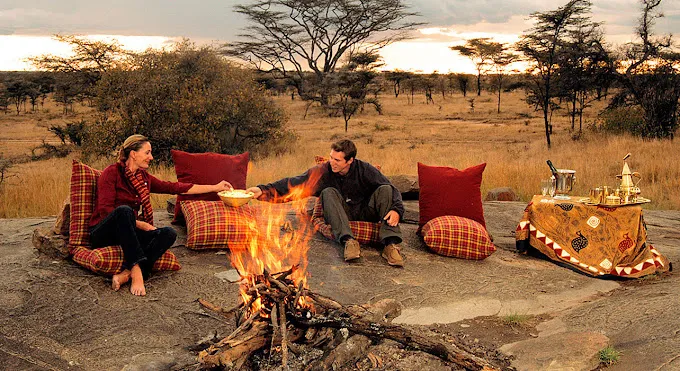
What makes a Kenya 3-day safari so magnificent? The iconic wildlife sightings? The incredibly beautiful landscapes? The varied and astounding cultures? Yes, yes, and yes!
With just 3 days safari in Kenya, you can see the big 5, the big cats, the over 500 bird species that reside in Kenya, giraffes, zebras, the wildebeest and so much more.
In this article, our experts will show you how to experience the best of Kenya’s reserves even if you have only 3 days in Kenya. You will learn where to go, what to see, and smart travel tips.But Before We Get Into That…
Here’s Where to Reach us to Book Your 3-Day Kenya Safari
Call or WhatsApp us at +254-704-532-105 or +254-719-222-430 or email us at safarioffers@kenyaluxurysafari.co.uk, safarioffers@ajkenyasafaris.com, or james@ajkenyasafaris.com.
And Here’s a List of Some of Our Most Booked 3-Day Kenya Safari Packages
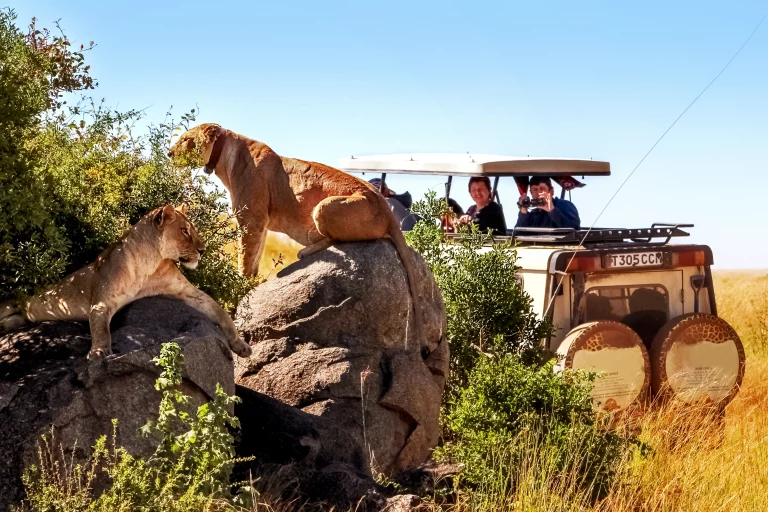
The Classic, 3-Day, 2-Night Masai Mara Safari
From £798
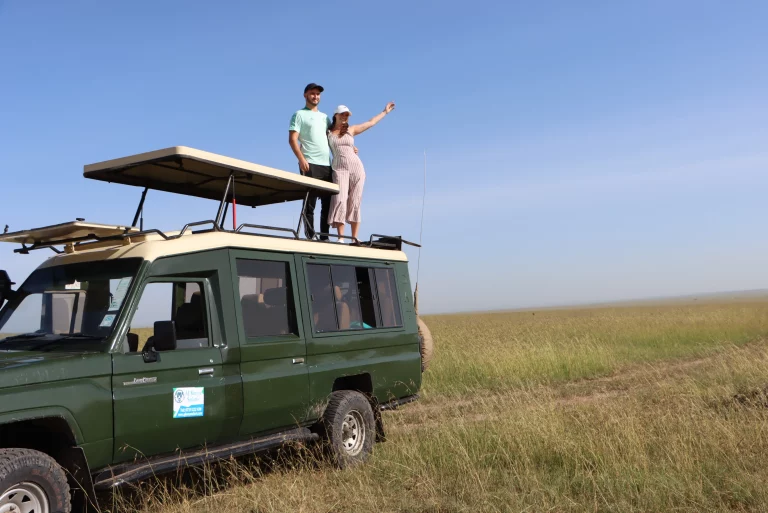
The Budget, 3-Day, 2-Night Jambo Masai Mara Safar
From £887
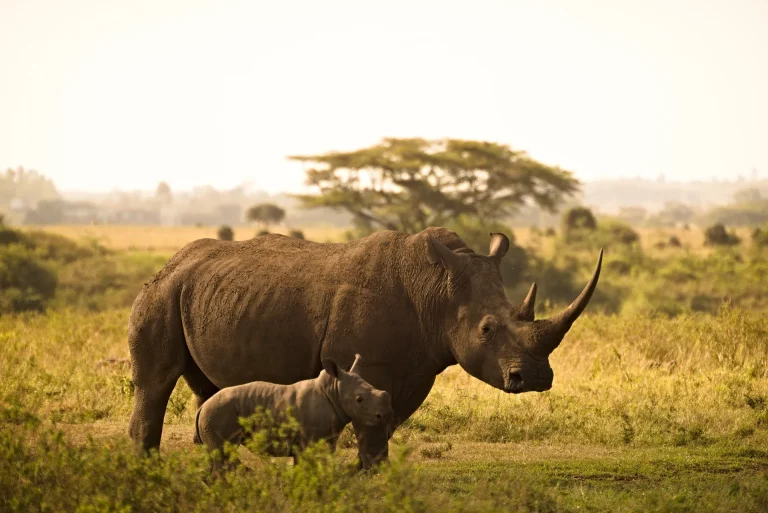
The Classic,3-Day, 2-Night Aberdare National Park Safari
From £941
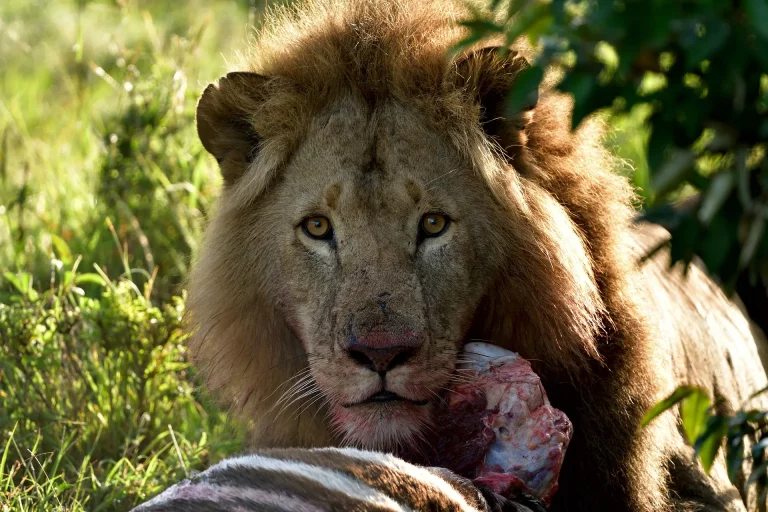
The Magical, 3-Day, 2-Night Amboseli National Park Safari
From £864
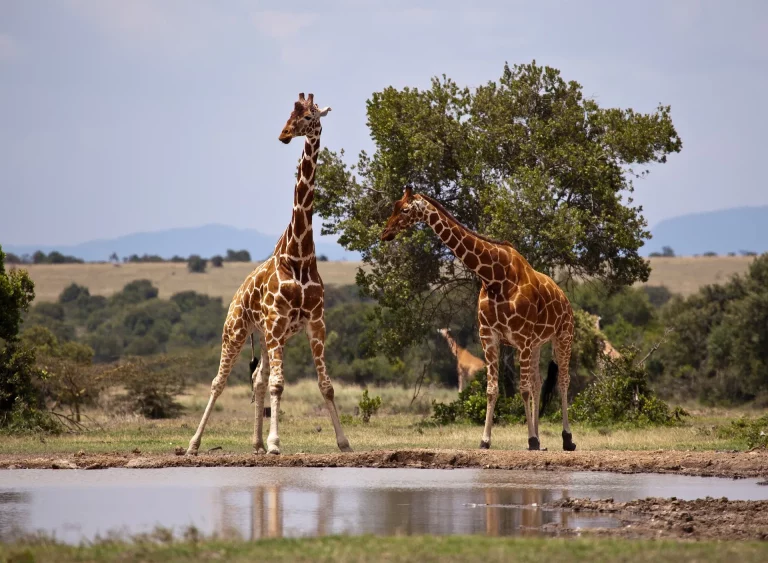
The Best, 3-Day, 2-Night Meru National Park Safari
From £1285
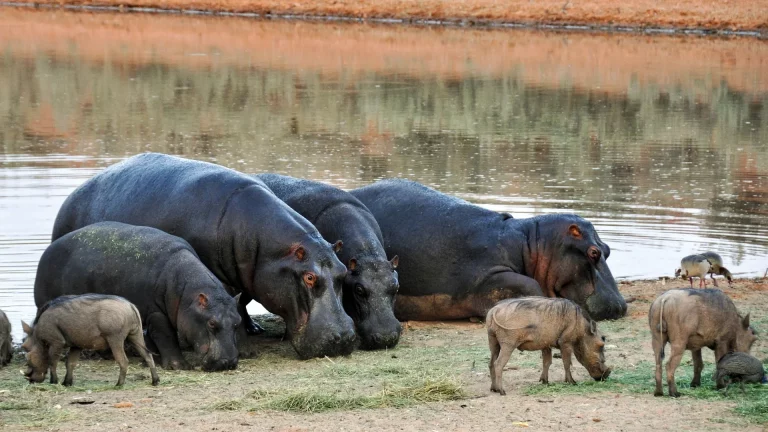
The Best-Selling, 3-Day, 2-Night Ol Pejeta Conservancy Safari
From £864
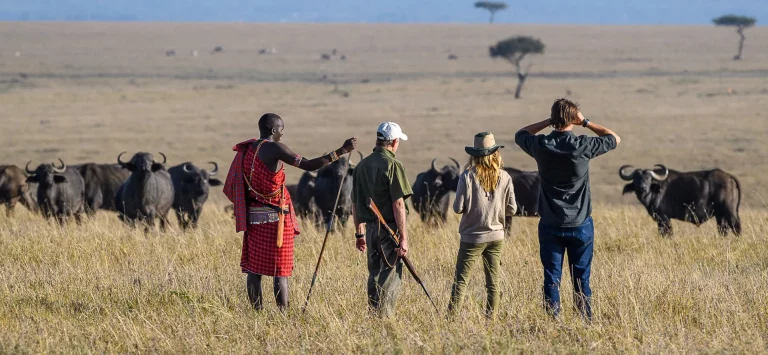
The Ultimate, 3-Day, 2-Night Samburu National Reserve Tour
From £815

The Classic, 3-Day, 2-Night Tsavo East and West Safari
From £770
Exploring the Best of Kenya in Three Days
Some of the must-visit national parks for the best Kenya day trips or ⅔ days safari iinclude:
- Nairobi National Park
- Maasai Mara National Reserve
- Amboseli National Park
- Tsavo National Park
- Lake Nakuru National Park home to over 50 mammal species, 400 bird species, and the beautiful Crescent Island.
P.S. On your way to Lake Nakuru, stop at the Great Rift Valley Viewpoint for amazing views of mountains, farmlands, and lakes. - The Ol Pejeta Conservancy
- Giraffe Centre where you can pet and feed giraffes
- David Sheldrick Elephant Orphanage for an intimate interaction with orphaned elephants
- Hell’s Gate National Park for amazing views of wildlife, towering cliffs, scrubby volcanoes, and water-gouged gorges.
However, the thrill of a Kenyan safari is not confined to the vast expanses of its national parks. The journey from Nairobi to the parks is an adventure in itself, with numerous trips from Nairobi offering unforgettable experiences. As you drive down from the bustling city, the urban landscape gives way to the majestic Great Rift Valley. The scenic drive, teeming with picturesque landscapes and exquisite sunsets, is a precursor to the magnificent wildlife experiences that await.
Nest, we look at the best Destinations for a 3 Days Kenya Safari Tour.
The Magic of Masai Mara: A Must-Visit on Short Safaris
A visit to the globally acclaimed Masai Mara is necessary for any Kenyan safari. A sanctuary for an abundance of wildlife, the Masai Mara hums with life, presenting a mesmerizing spectacle of nature at its finest. As you traverse the expansive plains, you’ll find yourself amidst a dizzying array of fauna. Some of the wildlife you can expect to see in the Masai Mara includes:
- Majestic lions basking in the sun
- Swift cheetahs chasing their prey
- Graceful giraffes grazing on the treetops
- Playful elephants splashing in the water
- Agile zebras galloping across the savannah
There’s also the iconic Mara River crossing, a key attraction during the great wildebeest migration. The spectacle happens between July and October and is characterized by intense moments of survival and defeat.
Accommodation Options
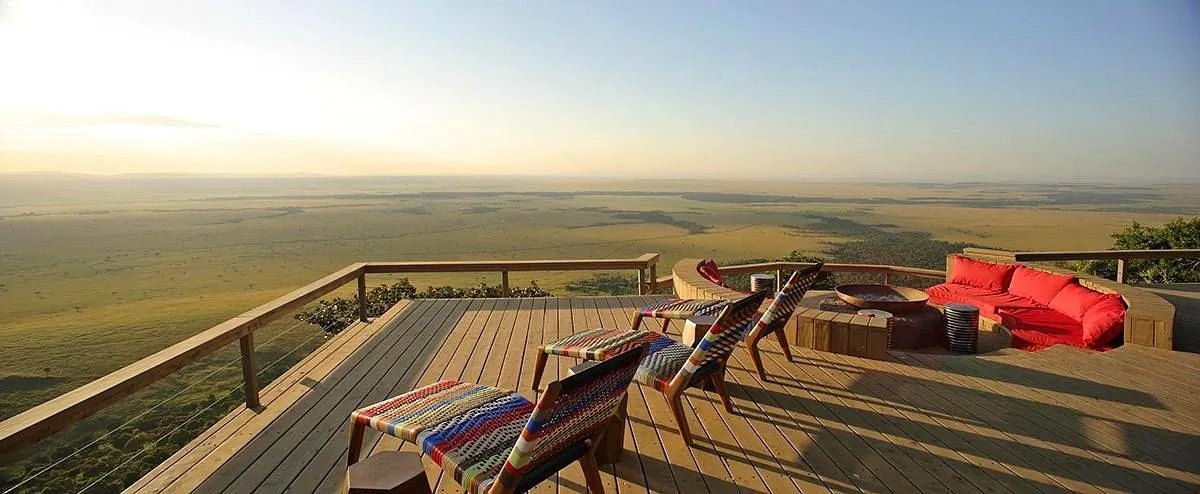
The Masai Mara offers a wide variety of camps and lodges to choose from. Be it the rustic charm of the Lenchada Tourist Camp or the opulence of the Keekorok Lodge, there’s something for every preference.
You can also opt for a private and exclusive safari experience by staying in conservancies adjacent to the reserve or in smaller camps, such as Nkoromobo, Naibor, or Sala’s Camp. These camps offer limited guest numbers, guaranteeing more exclusive game drives and an intimate wildlife viewing experience.
Game Drives and Wildlife Tours
The teeming and diverse wildlife of the Mara is one of the reasons it offers the best day trips. As your vehicle weaves through the sunburned grasslands, you’ll find yourself face-to-face with some of the most majestic creatures on the planet.
Afternoon game drives, in particular, offer excellent opportunities to spot the Big Five, making your day trip an adventure to remember. For those looking for more variety, consider exploring other day trips in the region.
Amboseli National Park: Elephants Against the Backdrop of Mt Kilimanjaro
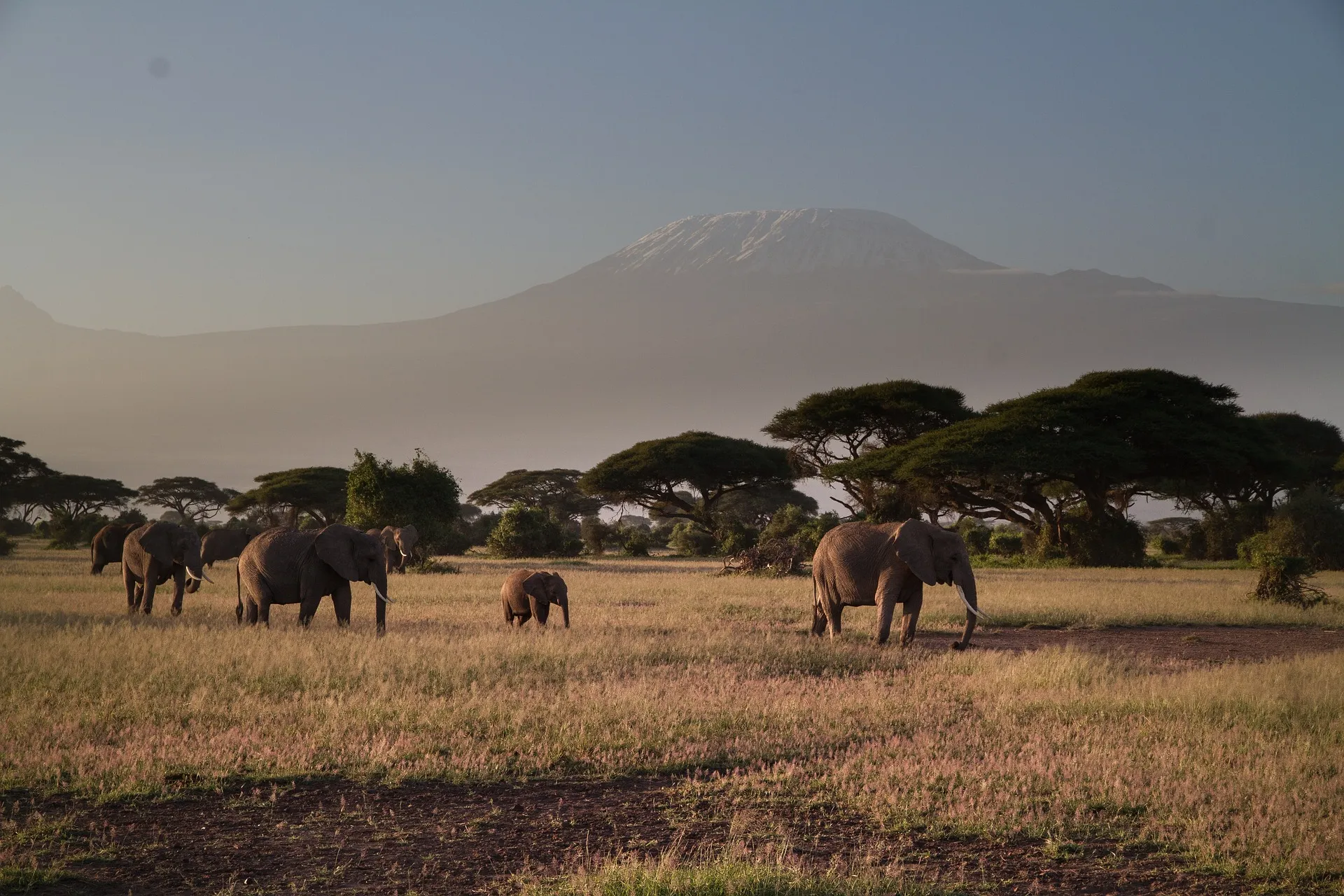
Leaving the captivating plains of the Masai Mara behind, we travel next to the foothills of Africa’s tallest peak, Mount Kilimanjaro. Here lies the Amboseli National Park, a realm where elephants roam freely against the backdrop of the snow-capped Kilimanjaro. As you traverse the park, you’ll find yourself surrounded by large herds of elephants, their gentle demeanor a stark contrast to their imposing stature. But elephants aren’t the only residents of Amboseli. The park is also home to a variety of other wildlife, making every game drive an exciting voyage of discovery.
Park Fees and Logistics
The well-structured logistics make visiting Amboseli National Park a seamless and stress-free experience. The park’s entrance fees for non-resident adults stand at \$60, with varying rates for children, residents, and different categories.
The best time for wildlife viewing is during the dry season, which spans from June to October and January to February. During this time, animals congregate around water sources, making it easier to spot them. However, the park can be dry and dusty during these months so dress accordingly.
If you prefer greener landscapes, consider visiting during the wet season from November to May, when the park is lush and the views of Kilimanjaro are clearer.
Private Safari Experiences
For a more customized experience, you might want to consider a private safari tour in Amboseli. With a private safari, you have the freedom to:
- Tailor your game drives and activities to your individual preferences
- Have a more intimate wildlife viewing experience
- Set your own schedule
- Spend more time on preferred activities
- Gain in-depth insights into the park’s ecosystems from your personal nature guide
Lake Nakuru National Park: A Birdwatcher’s Paradise
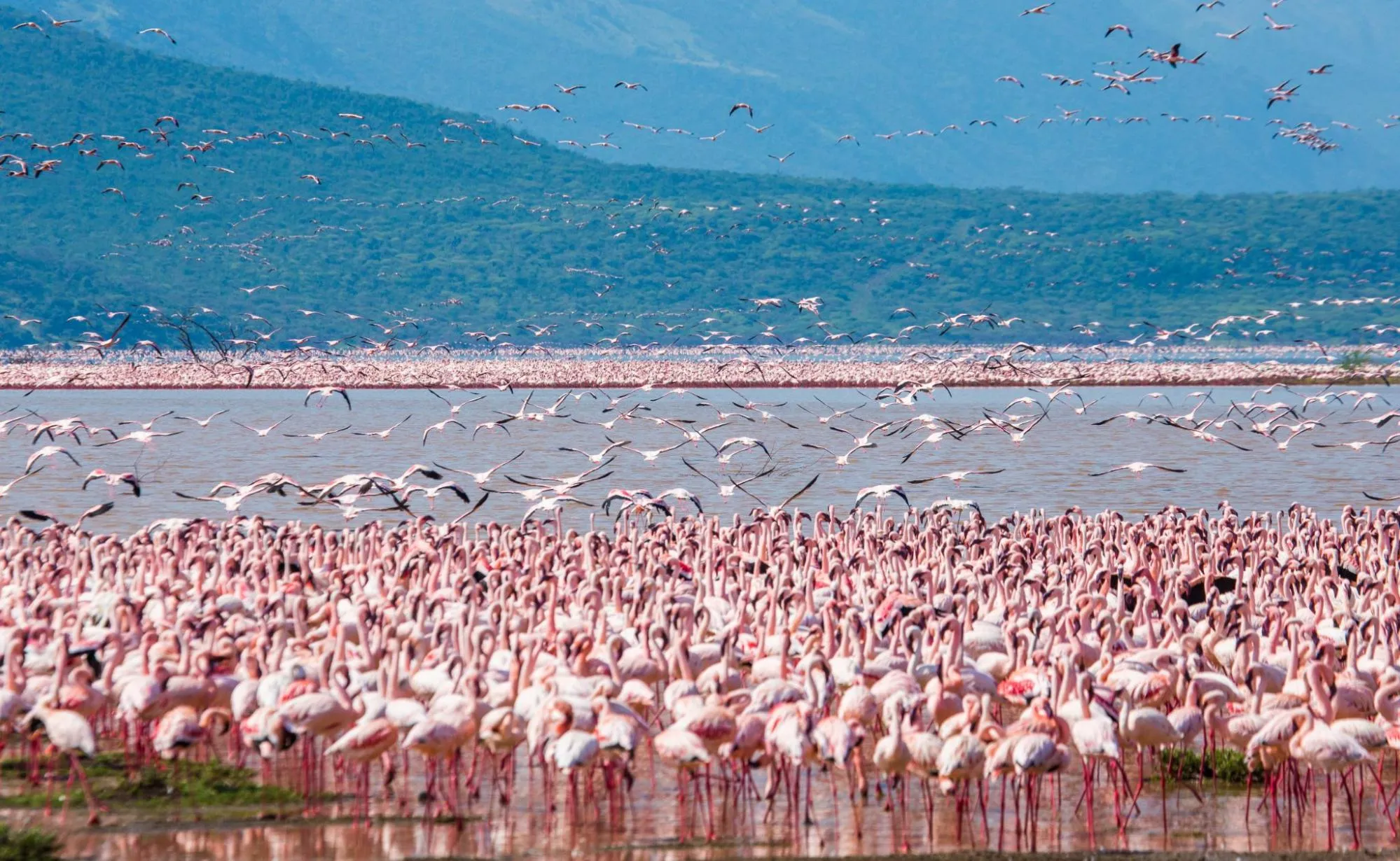
Leaving behind the land of giants, we next head towards Lake Nakuru National Park, a paradise for bird lovers. Here, the melody of chirping birds fills the air, as over 312 recorded bird species make their home. The park’s crown jewel, however, is its vibrant population of greater and lesser flamingos. As they flock to the lake shores, their pink plumage creates a stunning spectacle that is nothing short of mesmerizing.
But Lake Nakuru isn’t just about the birds. The park is also home to a variety of other wildlife. As you navigate its trails, you might just spot an elephant lazing around, a lion sun basking, or a rhino grazing in the distance. Each encounter adds a new chapter to your Lake Nakuru adventure, making it a must-visit destination on your 3-day safari.
Day Tour vs. Overnight Stay
In planning your Lake Nakuru visit, you may be uncertain whether to opt for a day tour or an overnight stay. While a day tour offers a quick glimpse into the park’s beauty, an overnight stay lets you soak in its charm at a more leisurely pace. Deciding between the two also largely depends on your schedule and your desire to explore the park’s diverse wildlife without the constraints of travel time.
Whichever you choose, rest assured, your Lake Nakuru experience will be one for the books.
Boat Ride and Game Viewing
To truly appreciate Lake Nakuru’s abundant wildlife, step aboard a boat safari. Guided by experienced naturalists, these safaris offer a unique perspective of the park’s diverse habitats. As your boat glides through the water, you’ll come across a host of aquatic wildlife, from hippos to reptiles basking on the rocks. While Lake Naivasha also offers boat safaris, Lake Nakuru’s experience is truly unparalleled.
Each boat safari lasts approximately 2.5 hours and is timed strategically for the best game sighting opportunities and favorable weather conditions.
3 Days Kenya Safari Itinerary – Maximizing Your Safari Time: Tips and Tricks
Given the abundance of sights and experiences that you can sample with 3 days in Kenya, it is vital to maximize your safari time. And there are several ways to do just that. Early morning game drives, for instance, offer the best chance to see predators before they retreat for the day. For those keen on spending the entire day immersed in animal spotting, full-day game drives with included picnic lunches are a great choice.
Moreover, overnight stays within the park not only save time but also increase the chance of witnessing nocturnal animal behavior and enjoying optimal photography conditions during sunset and sunrise.
Another way to make the most of your safari is to opt for a full-board safari package. These packages take care of all meals, accommodations, and logistical details, allowing you to focus solely on the safari itself. With everything pre-arranged, you can concentrate on the wildlife and landscapes around you, making your safari a truly immersive experience.
Avoiding Crowds and Peak Season Advice
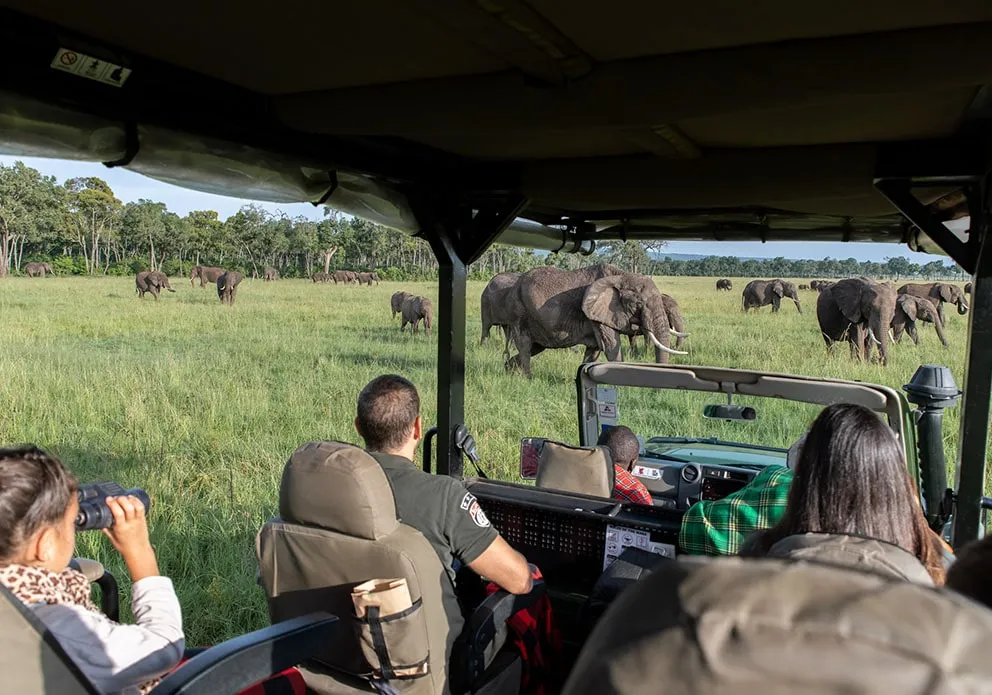
If you time your visit correctly, you can evade crowds and enjoy the best of Kenya’s wilderness. While the high season from December to March and July to October is popular, it also means more crowds.
Choosing to visit during the dry season instead of the peak tourist season helps avoid these crowds. If you’re budget-conscious, consider visiting during the low season from April to June, when rates are lower. Just remember to plan for potential delays due to challenging road conditions during this time.
By strategically planning your visit and choosing less frequented locales, you can enjoy a less crowded and more personal Kenya safari experience.
Extra Costs to Consider
Accounting for extra costs is an important part of your safari planning process. These might include tipping hotel staff, safari guides, and drivers. A recommended tip is around €25 per person per day. It’s also standard to budget for park entrance fees, taxes, meals, game drives, and driver’s allowances, which are typically included in the tour price.
By planning ahead and setting a budget for these additional costs, you can enjoy a stress-free safari experience.
Immersive Cultural Experiences: Maasai Villages and More
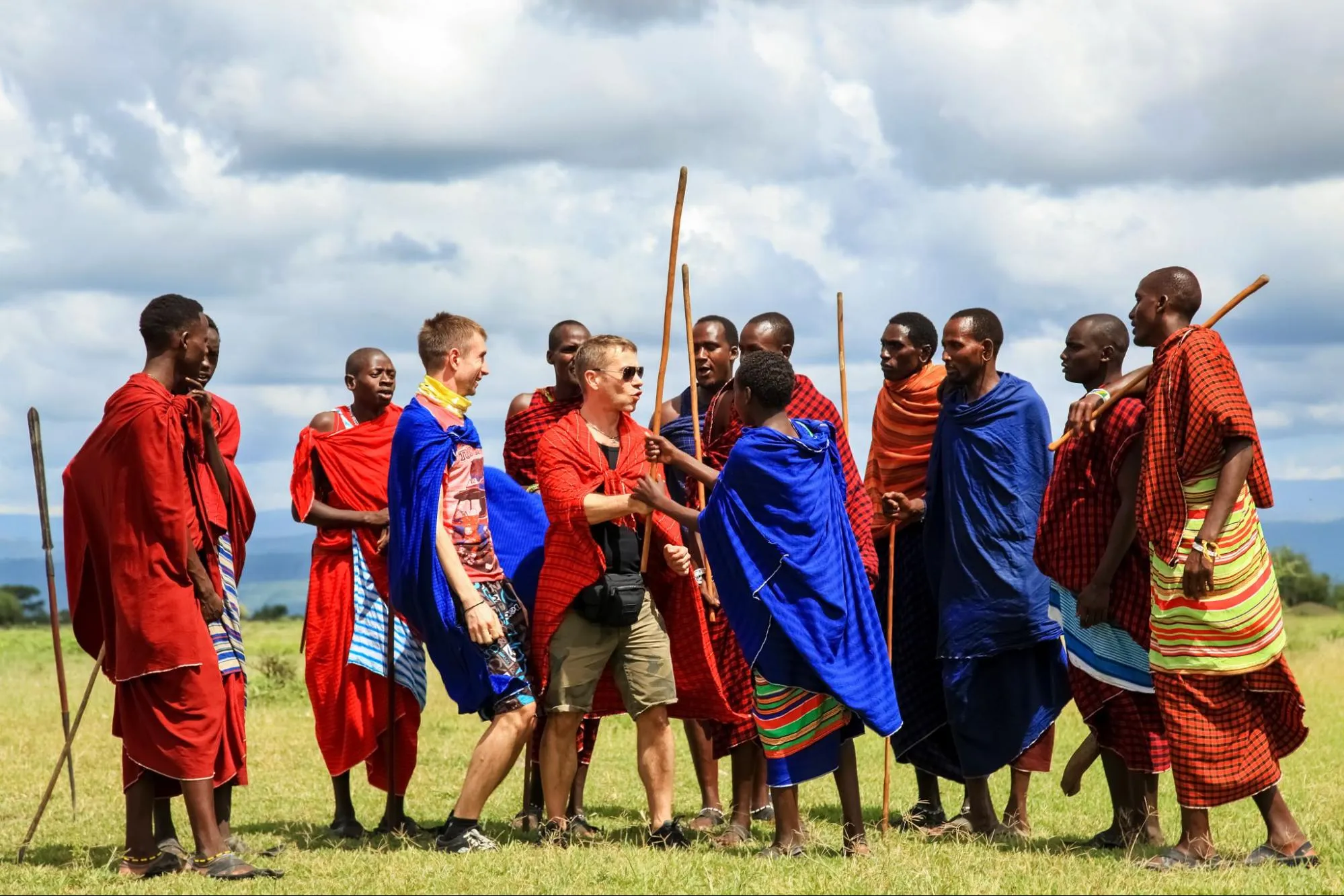
A Kenyan safari trip offers more than just wildlife encounters; it’s also a chance to delve into the country’s diverse culture. One such cultural experience is a visit to a Maasai village. Here, you can:
- Learn about Maasai life and traditions
- Participate in the Masai Jumping Dance
- Walk with giraffes
- Learn how to throw a spear
For the best experience, consider staying at the Maasai Simba Camp. At this camp, guests can:
- Meet Maasai village elders and women
- Children can enjoy activities such as herding and playing local games with Maasai children
- Learn to milk a cow
- Enjoy Maasai chai
- Participate in bead-making with the Maasai Women Cooperative
Revenue Generated for Local Communities
Participating in cultural tourism not only enhances your safari experience, but also boosts the income of local communities. By purchasing handcrafted items or participating in traditional activities, you’re directly supporting these communities. In addition, guided tours in Maasai villages often contribute to community development initiatives, such as classroom construction and water distribution to isolated areas.
So, when you opt for sightseeing tours, especially cultural ones, you’re not just gaining a memorable experience, but also giving back to the community.
Balancing Wildlife and Cultural Activities
Balancing wildlife sightings and cultural activities is key to a holistic safari experience. Efficient scheduling allows you to enjoy both without missing out on prime game viewing opportunities. Cultural visits, for instance, can be conveniently planned for the first or last day during half-day game drives.
Moreover, with the assistance of your guides, you can seamlessly integrate day tours to places like the Elephant Nursery into your safari itineraries.
Preparing for Your 3 Day Kenya Safari: What to Pack and Expect
Preparation for your Kenyan safari, including knowing what to pack and what to anticipate, can ensure a smoother journey. Here are some things to keep in mind:
- Kenya’s weather conditions can vary significantly throughout the year, influenced by its two rainy seasons. While the ‘Long rains’ and ‘Short rains’ bring much-needed water to the region, they can also make trails muddy. Hence, sturdy, water-resistant shoes are a must.
- Early morning game drives in high-altitude areas can be quite chilly, necessitating layers of clothing and warm accessories.
- Sun protection, including hats, sunglasses, and sunscreen, is also crucial due to the strength of the equatorial sun.
In addition to clothing, packing for a safari should include:
- Versatile gear for both cooler temperatures and rain
- A good camera
- Binoculars
- A sturdy water bottle
These items can enhance your safari experience. And of course, don’t forget to pack your sense of adventure!
Clothing and Gear Essentials
Layering is the key to packing for a Kenyan trip Given the range of weather conditions, including cool mornings and hot afternoons, versatile clothing is a must. Opt for lightweight, breathable fabrics that dry quickly. Neutral colors are recommended as they blend well with the environment and don’t attract insects.
A sturdy pair of walking shoes is essential for game walks. Lastly, don’t forget to pack a hat for sun protection and a fleece or sweater for the cooler evenings.
Health and Safety Considerations
Prioritising your health and safety is crucial before you set out on your Kenyan safari. Mandatory vaccinations for entry into Kenya include yellow fever, and it is strongly advised that travelers also receive vaccinations for other diseases prevalent in the region, such as hepatitis A, hepatitis B, and meningitis. It’s also recommended to be up-to-date with routine vaccines like MMR, diphtheria-tetanus-pertussis, chickenpox, shingles, polio, and the annual flu shot. Additional vaccinations, such as those for typhoid, polio booster for adults, and COVID-19, can further protect your health during the trip.
Consider taking malaria prophylaxis before, during, and after your trip to Kenya, tailored to the specific areas you’ll be traveling to. Also, preventive measures to avoid bug bites are essential due to diseases like dengue, chikungunya, and Rift Valley fever, which are transmitted through mosquito or tick bites.
Lastly, be aware of tuberculosis risks and take appropriate precautions, as it is a disease commonly spread through the air in Kenya.
Sustainable Safari Practices: Preserving Kenya’s Natural Heritage
As you commence your Kenyan safari, reflect upon the influence of your journey on the environment and local communities. Sustainable safari practices are increasingly vital in East and Southern Africa, allowing travelers to give back and support local communities while enjoying their safari experiences. Some examples of sustainable safari practices include:
- The use of renewable energy sources in camps and lodges
- The support of local conservation efforts
- Engaging with local communities and supporting their livelihoods
- Minimizing waste and practicing responsible tourism
When you choose to travel sustainably, you’re not just witnessing Kenya’s breathtaking landscapes and diverse wildlife. You’re also participating in their preservation for future generations. By making conscious choices about your travel, you can ensure that your safari leaves a positive impact on the environment and local communities.
Eco-Friendly Accommodation Choices
Kenya boasts an array of eco-friendly lodging options for the environmentally-minded traveller. These lodgings are designed to minimize their impact on the environment, often running on solar power and using eco-friendly charcoal for heating water. Notably, some eco-friendly accommodations in Kenya are certified by Ecotourism Kenya, which promotes responsible tourism practices and awards the Eco-Rating Certification to compliant lodges and camps.
By choosing these accommodations, you’re supporting their efforts in preserving Kenya’s unique ecosystems.
Supporting Conservation Efforts
Conservation is a collective duty, and there are several ways you as a traveler can contribute. Here are some ways to contribute to conservation while on safari:
- Select safari operators who work collaboratively with conservation organizations
- Choose safari tours that incorporate educational talks on wildlife conservation, raising awareness among tourists
- Engage in conservation activities such as wildlife tracking and anti-poaching patrols, supporting the protection of animals
By taking these steps, you can make a positive impact on wildlife conservation during your safari experience.
Additionally, a portion of the fees paid for safaris often go towards conservation projects, providing vital funding for the protection of wildlife and habitats.
Summary
A 3-day safari in Kenya offers a unique blend of breathtaking landscapes, diverse wildlife, and rich cultural experiences. From the roaring lions of Masai Mara to the graceful flamingos of Lake Nakuru, every moment is an encounter with the raw beauty of nature. By making conscious choices, such as opting for sustainable practices and supporting local communities, you can ensure that your adventure leaves a positive impact. So go ahead, pack your bags, and embark on an unforgettable adventure into the heart of Kenya. Your safari awaits!
Kenya Itinerary 3 Days – Frequently Asked Questions
Next, we look at the most common questions we get about planning 3 days Kenya safari tours.
Which is the safest safari in Kenya?
The Masai Mara National Reserve is one of the safest parks for a safari in Kenya due to its remote location in the wilderness, away from towns and cities, and low human population. This makes it a peaceful and secure destination for wildlife enthusiasts.
How much is a budget safari in Kenya?
A budget safari in Kenya can start at £200 per person per day, but may range up to £650 per person per day. Prices may vary based on the specific tour and amenities included.
How many days is enough for a Kenya safari?
Five to seven days is an ideal time to spend on a Kenya safari, allowing for a well-rounded experience of the capital city Nairobi and some of the country’s exceptional safari parks.
What is the best time to visit Amboseli National Park for wildlife viewing?
The best time to visit Amboseli National Park for wildlife viewing is during the dry season from June to October and January to February, as animals gather around water sources, providing excellent viewing opportunities.
How can I maximize my wildlife viewing experience in Masai Mara?
To maximize your wildlife viewing experience in Masai Mara, consider taking early morning game drives to see predators before they rest, and opt for full-day game drives with included picnic lunches for extended animal spotting opportunities. This can greatly enhance your overall experience in the reserve.
